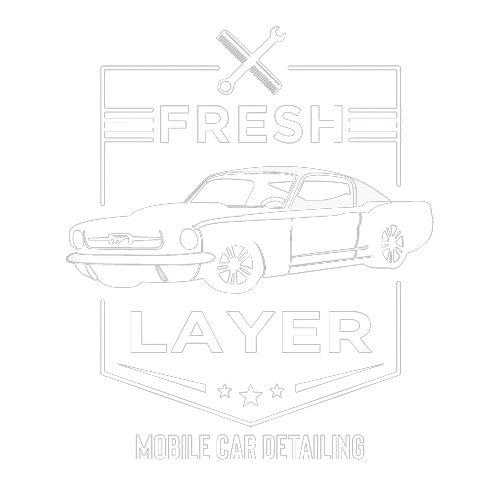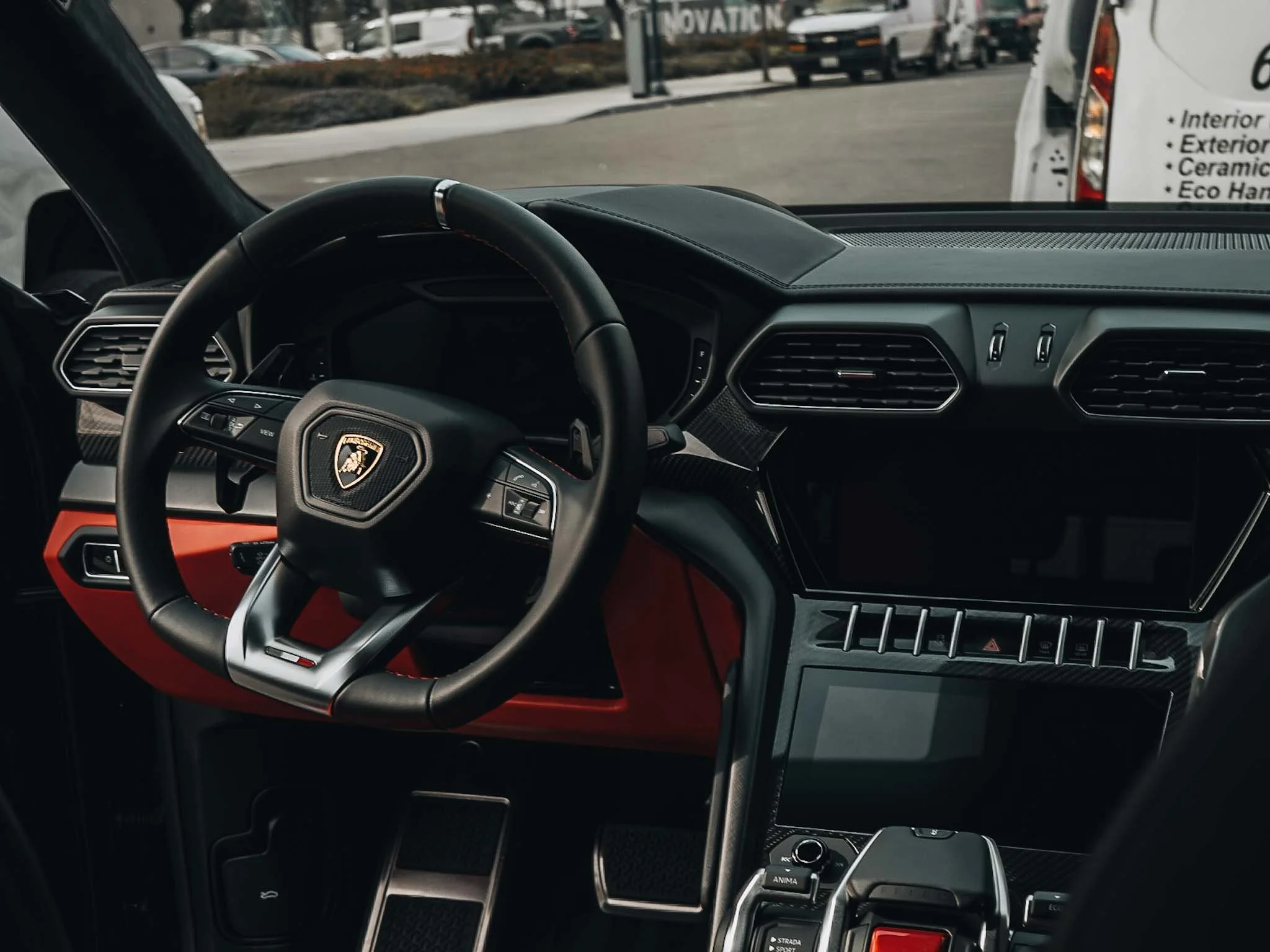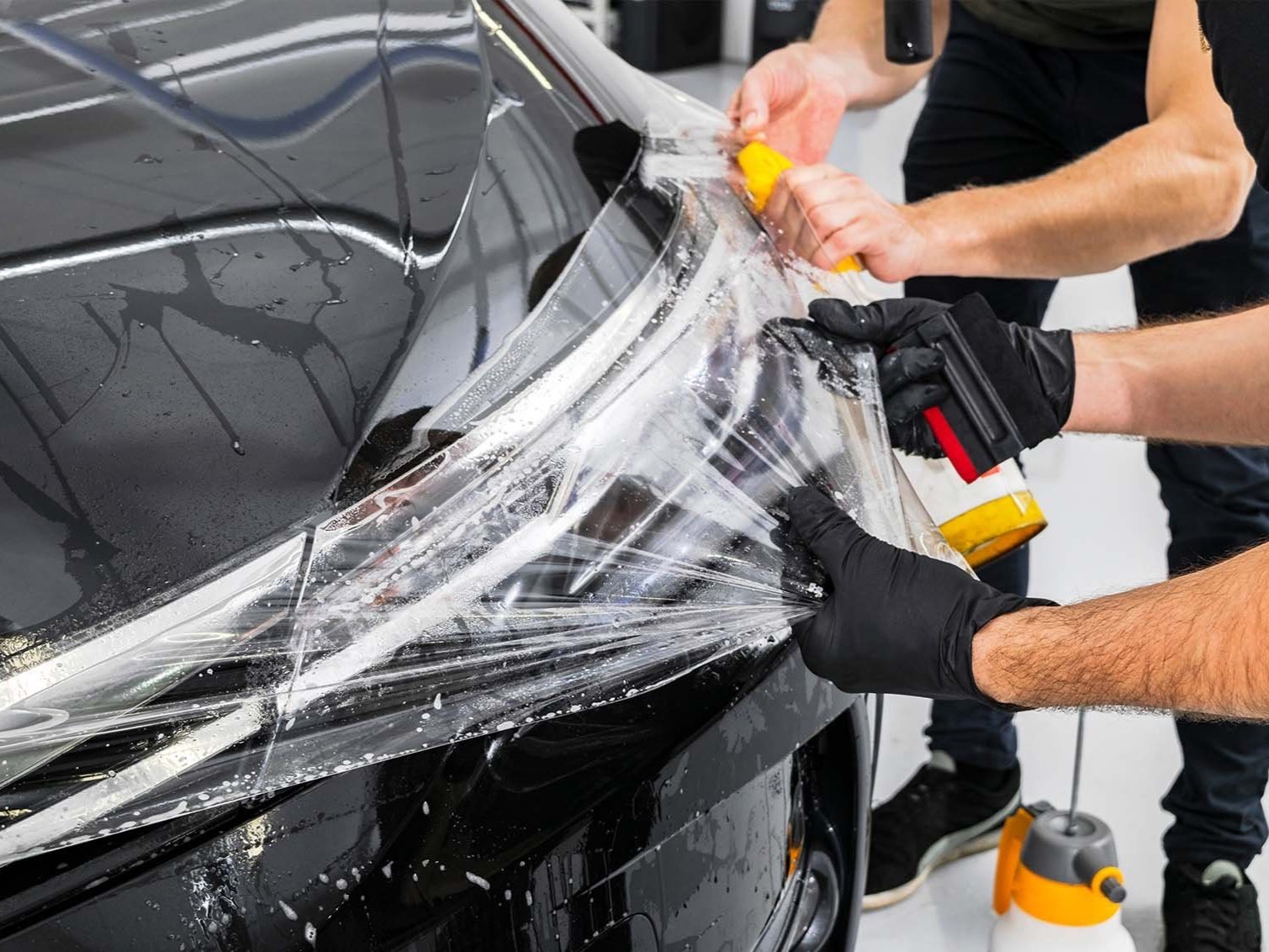Detailing an Old Car vs. Detailing a New Car: What’s the Difference?
The Art of Car Detailing
Detailing a car is more than just a wash and wax; it’s an art form that restores and enhances a vehicle's beauty.
However, not all cars require the same approach. Detailing an older car versus a newer one can be vastly different due to the varying conditions, materials, and wear-and-tear each has undergone.
In this blog, we’ll break down the key differences between detailing an old car and a new car, offer expert insights, and answer the most common questions about the process.
Whether you’re a car enthusiast or a professional detailer, this guide will help you achieve the perfect finish every time.
The Delicate Art of Detailing Old Cars
Detailing an old car is often about restoration and preservation. These vehicles, with their years of wear and tear, require a delicate touch to rejuvenate their faded glory without causing further damage.
Techniques here are more about reviving the original charm, handling aged paint, rust spots, and worn interiors with care and precision.
Preserving the Pristine with New Car Detailing
On the other hand, detailing a new car is primarily about maintenance and protection.
These cars don't carry the marks of time, but they do need preventive care to keep them looking as good as they did on the showroom floor.
The focus is on applying protective coatings, maintaining the pristine condition of the paint, and ensuring the interior remains spotless and fresh.
Why Different Cars Need Different Care
Understanding these differences is crucial because the wrong techniques can do more harm than good.
Using aggressive cleaning methods on an old car can strip away its character, while lackadaisical maintenance on a new car can shorten its lifespan of looking new.
In the following sections, we’ll explore the specific methods, products, and care tips to ensure your vehicle, whether it's a classic beauty or a modern marvel, receives the detailing it needs to shine.
The Unique Challenges of Detailing an Old Car
Body
Why Does Detailing Differ for Old and New Cars?
Old cars and new cars present unique challenges and opportunities when it comes to detailing:
Condition of Paintwork
Old Cars: Often have oxidized, faded, or scratched paint that requires correction techniques like compounding and polishing.
New Cars: Typically feature pristine paint that may only need a light polish or protective coatings.
Interior Materials
Old Cars: Interior materials may show signs of aging, such as cracked leather, faded upholstery, or brittle plastics.
New Cars: Interiors are usually in excellent condition and require maintenance rather than restoration.
Wear and Tear
Old Cars: Years of exposure to the elements mean rust spots, dents, and deep scratches are common.
New Cars: Minimal wear and tear makes the detailing process faster and easier.
Navigating the Nuances of Aged Vehicles
Detailing an old car presents a set of unique challenges that demand a careful and considered approach. Unlike newer models, vintage or simply older vehicles often come with a history of wear and exposure that can significantly affect their appearance and condition.
Tackling Faded Paint and Rust Issues
One of the most common issues with older cars is faded paint. Years of exposure to the elements can leave the paint job looking dull and lifeless. Restoring this paint without causing further damage requires specialized products and techniques. Similarly, rust is another frequent problem, especially in areas with high humidity or in cars that haven’t been garage-kept. Treating rust effectively is crucial, as it not only affects the car's appearance but can also lead to structural issues if left unchecked.
Reviving Worn Interiors with Care
The interiors of older cars also present challenges. Materials like leather, vinyl, and fabrics may have undergone significant wear, drying out, or even cracking over time. Refreshing these materials while preserving their originality is a delicate task. It's not just about cleaning – it’s about nourishing and revitalizing these aged materials to bring back some of their former resilience and appearance.
The Importance of Gentle, Restorative Techniques
When detailing an old car, the emphasis is on gentle, restorative techniques. Aggressive cleaning methods or harsh chemicals that might be suitable for newer vehicles can further damage older materials. Instead, the approach should be methodical and cautious, using products specifically designed for older car materials and focusing on preservation and restoration. This mindful approach not only enhances the car's aesthetic appeal but also contributes to its longevity, ensuring that these rolling pieces of history can be enjoyed for years to come.
Key Aspects of Detailing a New Car
Preserving the Showroom Shine
Detailing a new car revolves around maintaining its pristine condition and safeguarding it against future wear and tear. Unlike older cars, where the focus is on restoration, detailing a new car is all about preservation and protection.
Focus Areas in New Car Detailing
Protective Treatments: A significant aspect of detailing a new car involves applying protective treatments. This includes paint sealants, ceramic coatings, or wax to shield the exterior paint from environmental damage like UV rays, bird droppings, and tree sap.
Interior Protection: For the interior, using fabric protectors and leather conditioners is crucial to prevent premature wear or staining. Regular application ensures materials like leather remain supple and fabrics resist spills and dirt.
Undercarriage and Wheel Protection: Attention is also given to areas often overlooked, such as the undercarriage and wheels. Applying protective coatings can prevent rust and corrosion, especially in areas with harsh weather conditions.
Emphasizing Preventative Measures
Regular Cleaning and Maintenance: Regularly cleaning the exterior and interior of the car prevents the buildup of contaminants that can damage the car's finish over time.
Using Gentle Products: It's important to use gentle, pH-balanced cleaning products that clean effectively without stripping away protective coatings.
Avoiding Environmental Hazards: Parking strategies to avoid excessive sun exposure or parking under trees can help maintain the car's exterior condition.
Key Differences in the Detailing Process
1. Cleaning the Exterior
Old Cars:
Begin with a clay bar treatment to remove embedded contaminants.
Use a heavy-duty degreaser to tackle grime accumulated over years.
Address rust with specialized treatments to stop further damage.
New Cars:
Focus on gentle cleaning with pH-neutral shampoos to preserve factory coatings.
Avoid aggressive methods that might damage the finish.
2. Restoring the Paint
Old Cars:
Paint correction is often necessary to eliminate swirls, scratches, and oxidation.
Use dual-action polishers and compounds to restore the shine.
New Cars:
Apply ceramic or graphene coatings to protect the paint from UV rays and contaminants.
3. Interior Detailing
Old Cars:
Pay extra attention to cleaning and conditioning leather seats and plastic surfaces.
Replace or restore worn carpets and headliners.
Use ozone treatments to eliminate lingering odors.
New Cars:
Vacuum and clean surfaces lightly to maintain freshness.
Apply UV protectants to prevent future fading.
4. Engine Bay Detailing
Old Cars:
Remove built-up grease and inspect for leaks or rusted components.
Use non-acidic cleaners to avoid damaging delicate parts.
New Cars:
A quick wipe-down is often sufficient to maintain cleanliness.
5. Protective Measures
Old Cars:
Seal the paint with a durable wax or ceramic coating to prevent further degradation.
Apply protective films to high-wear areas.
New Cars:
Focus on maintaining the showroom finish with regular upkeep
The aim of detailing a new car is to keep it looking as close to its condition when it first left the showroom as possible. This not only enhances the driving pleasure but also helps in maintaining the car's resale value. Proactive measures taken today can significantly reduce the need for more intensive detailing services in the future and help in preserving the vehicle’s value and appeal.
Note that when detailing an old vehicle, take care with switches, levers, and anything else that could be potentially fragile, as finding replacement components should a frail part snap off may be challenging for older models.
As with anything older, the main focus in detailing a vintage or classic car versus a newer model should be about thoroughness and being delicate: modern materials are both more durable such as with modern paint coating, and more easily replaced should any damage or scratches occur, whereas older vehicles don’t have these protective layers while having already endured years of use.
Tips for Detailing Old Cars
Inspect Thoroughly Before Starting
Older cars often have hidden issues like rust or worn seals. A thorough inspection helps identify areas needing special attention.Use Specialized Tools
Invest in rotary polishers, high-quality brushes, and gentle cleaning solutions to tackle the challenges of aging materials.Focus on Restoration
Restoring rather than just cleaning is key when detailing an older vehicle. This includes conditioning leather and polishing metals.Apply Multiple Layers of Protection
Older cars benefit from multiple layers of wax or sealant to guard against further deterioration.Take Your Time
Rushing through the process can lead to missed spots or damage. Older cars require a patient and careful approach.
Conclusion: Tailoring the Process for Optimal Results
Detailing an old car is like reviving a piece of history, while detailing a new car is about preserving its current glory. Each requires a unique approach tailored to its condition and needs. By understanding these differences, you can ensure your vehicle looks its best, no matter its age.
Whether you’re a proud owner of a classic car or a shiny new ride, proper detailing will keep your vehicle turning heads for years to come.
*Remember: Taking Care of These Vehicles Will Ensure That Despite Their Age, Your Car Can Still Look Fresh and Young!
FAQ Section
-
Older cars might require more frequent detailing to maintain their condition, especially if they're showing signs of age. New cars, while needing less intensive care, benefit from regular maintenance to keep them in top condition.
-
It's best to use products specifically designed for the age and material of your car. Older cars often require gentler products formulated for their delicate materials, while newer cars can handle more robust products.
-
While DIY detailing is possible, professional detailers have the expertise and tools to handle the unique challenges of older cars. For best results, especially for significantly aged vehicles, professional detailing is recommended.
-
Regular washing, applying a high-quality wax or sealant, and avoiding harsh environmental conditions can help protect the paint on a new car.
Have questions? Please call us at 1 (619) 433-8974 for more information or fill out the form on our contact page.























